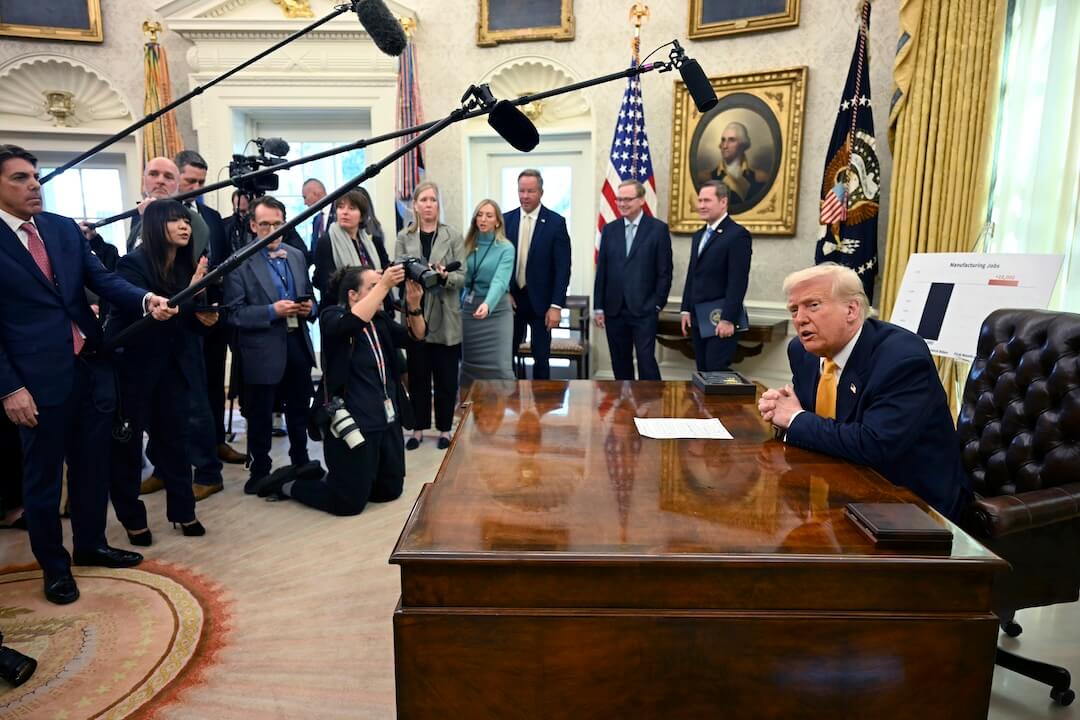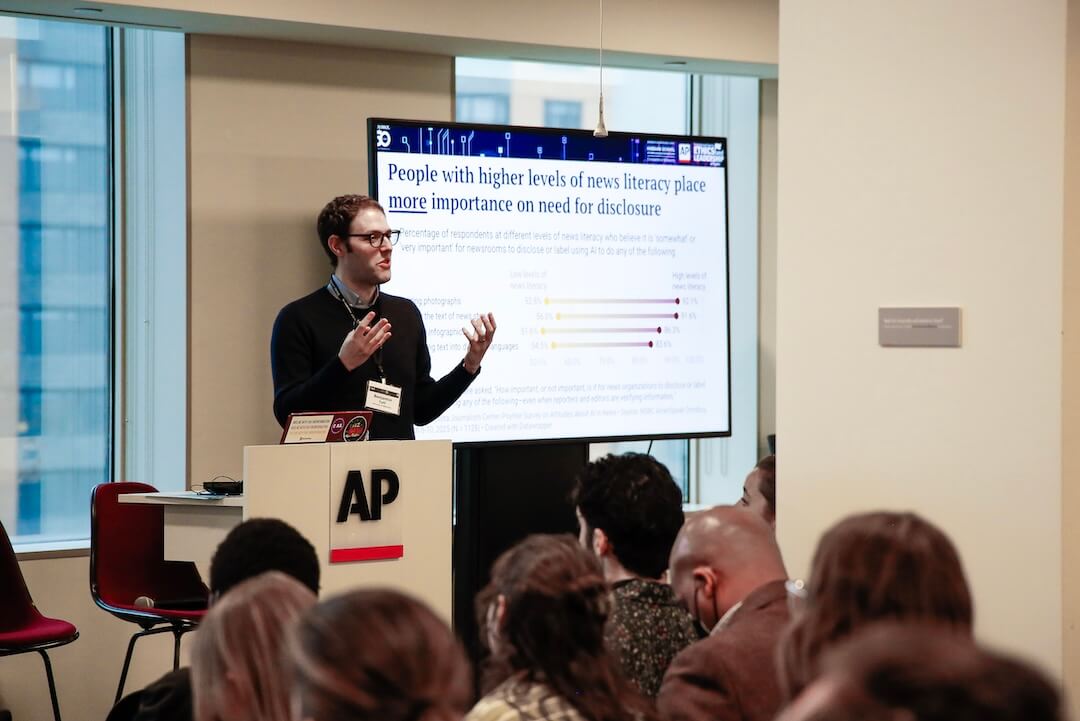In Dan Kane’s 35-year career, he’s developed a way of choosing the stories he should start poking around.
The investigative reporter at The (Raleigh, North Carolina) News & Observer thinks of them as triggers, and they’re set off by “harm, cost, power, complexity and secrecy,” he said.
Most recently, those triggers helped him uncover a conflict of interest in a story that took more than a year to publish.
In the nonstop news cycle, it can be hard to develop systems like Kane’s, and it can be hard to slow down. In fact, it might feel like the absolute last thing a local reporter should do. But this week, we have three projects that show why you must:
- As we see with Kane’s investigation, it takes time to see what the records say when people won’t talk.
- In Columbus, Ohio, the online nonprofit Matter News found it takes time to do work that gives context to better understand the news.
- And in New York, the weekly Highlands Current found it’s worth the time to think through the ethics and consequences of a story.
What’s your local newsroom working on? Share the work that you’re proud of, and I’ll reach out if we decide to feature it.
All the answers shared here came through a Google form and have been edited for length and clarity.
“… Complicated and controversial stories take time to do right.” – Dan Kane, News & Observer
Newsroom: The (Raleigh, North Carolina) News & Observer
Newsroom size: About 60
Story: How a public program at UNC enriched its former leader’s private businesses
Who worked on this story: Dan Kane, reporting, photography and video; David Raynor, database editor; Jordan Schrader, state government editor; Scott Sharpe, visuals editor; Alma Washington, regional growth producer.
How did you make this story happen?
I had been tipped off that the director of the University of North Carolina’s Development Finance Initiative – a program assisting local communities in redeveloping distressed properties – had also been on the receiving end in two cases, with a nonprofit and a city government investing millions of dollars to make them happen. That seemed like a conflict of interest, and I started looking into the program and its director and staff. I did some research and then filed a records request for correspondence and documents dealing with these projects as well as any other possible conflicts of interest. After waiting several months, I received a batch of files that included an internal audit about a conflict. Someone in the program had given a no-bid contract to a business partner to run the program’s operations. But the internal audit was heavily redacted so I didn’t know the people or the business involved in the conflict. I wrote a Sunshine Week story about that and then proceeded to figure out who and what was being hidden.
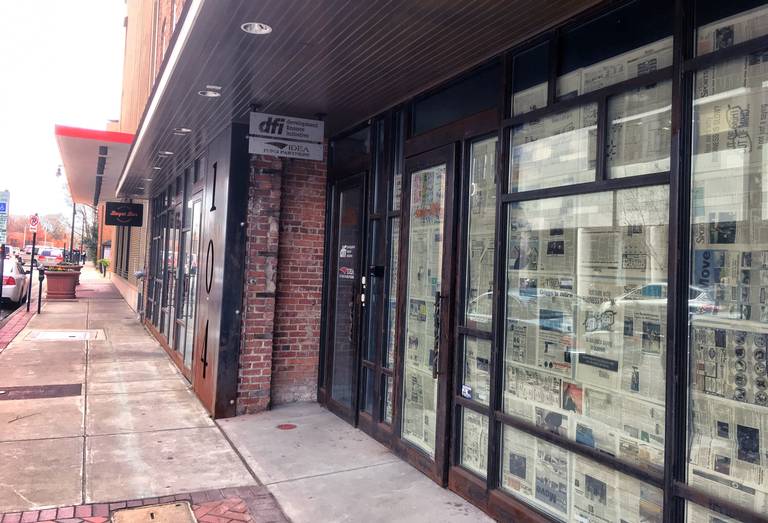
RELATED TRAINING: Fundamentals of Investigative Journalism
Has anything changed since or as a result of your reporting?
Yes, the UNC Board of Governors’ chairman said the board would take a look at DFI. One board member said the state auditor should take a look as well. I expect some sort of outside review to be made available at some point.
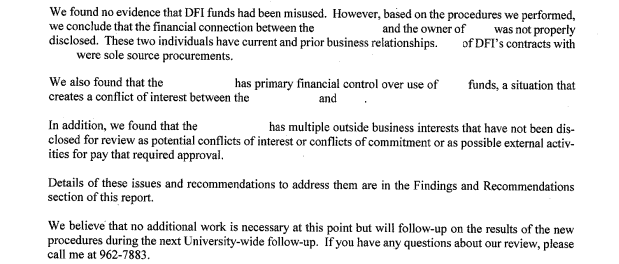
How can other local newsrooms do work like this?
More than a year passed from the time I was tipped off to when this story ran. Newsrooms have to respect the fact that complicated and controversial stories take time to do right. That doesn’t mean sitting around and waiting for records to be released, interviews granted, etc. You juggle other stories during those lulls. It’s important to know how to file and track public records requests. When records are refused, ask for the legal reasons for denial. Often, as in this case, they are specious, and give more impetus to push for the information. Newsrooms need to ask themselves why a story matters, so that a lot of time isn’t spent on something that might be interesting, but not important. I’ve developed an internal mechanism of sorts that I call triggers, such as harm, cost, power, complexity and secrecy. Any or all of those triggers will give me reason to do some preliminary checking.
“You have to actively choose to write more evergreen stories.” – Ris Twigg, managing editor, Matter News
Newsroom: Matter News, online nonprofit, Columbus, Ohio
Newsroom size: Eight, including active contributors and volunteer staff
Story: Gentrification Explained
Who worked on this story: Ris Twigg, managing editor
How did you make this story happen?
Matter News is an independent nonprofit digital publication that brings community context to local journalism in Columbus, Ohio. Around the time of our public launch in November 2018, we were gearing up to publish our first major piece, a gentrification explainer. I had just graduated from Ohio State University studying environmental/social policy and journalism. The explainer was my first major piece, and it was for a nonprofit startup I helped create that year. With that in mind, all of us at Matter are currently volunteers. We don’t have much funding yet (working on it!) but we are dedicated to bringing the nonprofit news model to the forefront of the journalism industry. I accomplished this piece while working a full-time internship for a tech energy startup. It took a lot of research, trying to put together decades worth of gentrification history to really break down the root causes of this problem that is so often reduced to craft breweries, hipsters and yuppies intruding low-income areas.
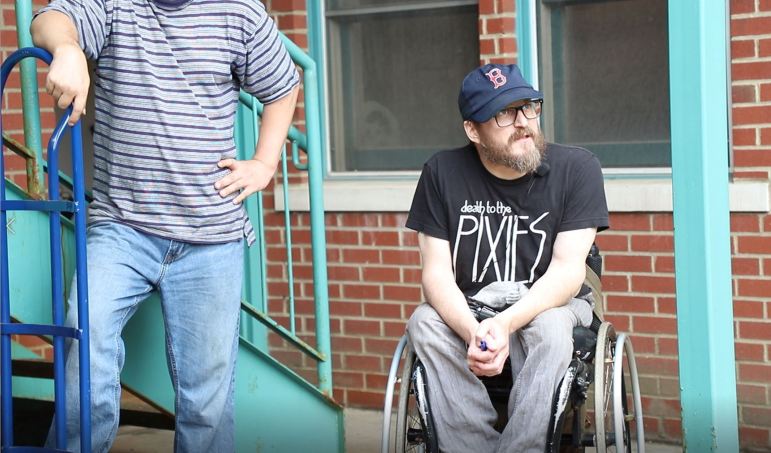
Want more on the transformation of local news? Subscribe to our weekly newsletter, Local Edition
What did you learn?
This is my biggest piece yet, and my first piece right out of college. I’m in the extremely early stages of my journalism career, and what I learned is to trust myself and be more confident in my capabilities. I was really intimidated after being chosen to write this piece, but I’m really proud of it. We hadn’t found a piece that gave a holistic view of gentrification and what caused it – everyone just talks about what’s happening. I also learned that people are really craving contextualized news. Give the people what they want! Readers are tired of spot coverage. They want impactful information they can digest and take action on. This is why I believe our gentrification explainer is the second-most viewed story on our site, next to our interactive income segregation map.
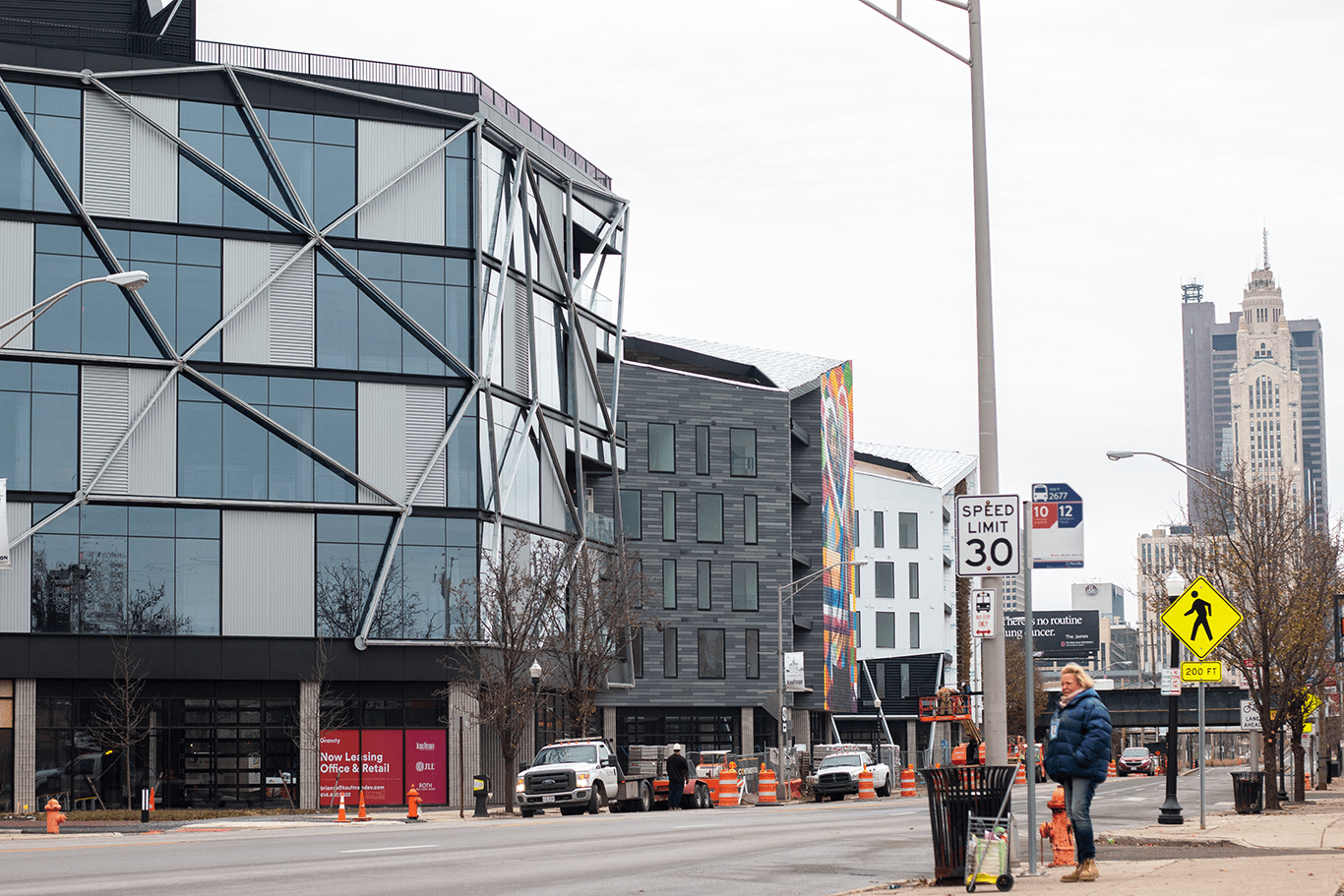
How can other local newsrooms do work like this?
You have to actively choose to write more evergreen stories. You have to choose not to write for quantity, but for quality. Journalism is an exchange of ideas and information, and if we can’t do it creatively and informatively … what value-add does the newspaper industry have anymore? At Matter, we are investigative in focus, so all of our pieces are usually evergreen. It’s what we’re calling the local news evolution: community-focused and contextualized. Those have to be your priorities.
“… Readers should know that organized hate exists everywhere, including in our small community…” Chip Rowe, editor, Highlands Current
Newsroom: Highlands Current, nonprofit weekly, Cold Spring, New York
Newsroom size: One full-time editor, one part-time arts reporter, four freelancers
Story: The extremist next door
Who worked on this story: Chip Rowe, editor
How did you make this story happen?
We received a tip that a white supremacist with a popular podcast lived nearby. It turned out he had grown up locally, as well. But we weren’t sure how to frame a story. What’s the news? We didn’t want to amplify his message and there was no immediate threat – the rhetoric was vile but there is lots of racist rhetoric out there, including from the president of the United States.
We wouldn’t be “exposing” him since he uses his real name on the show. His address is easy to find. He apparently supports himself from the podcast, so he’s not a teacher or police officer or anyone in authority. But Christchurch happened and it struck me that the message he was spewing out – the ridiculous claim that somehow white people are in danger of going extinct and that something must be done – was the same rhetoric that motivated the killer in Christchurch and also in Pittsburgh. So his beliefs were an element of a larger story. We also thought readers should know that organized hate exists everywhere, including in our small community, not just in the South or other “faraway” places.
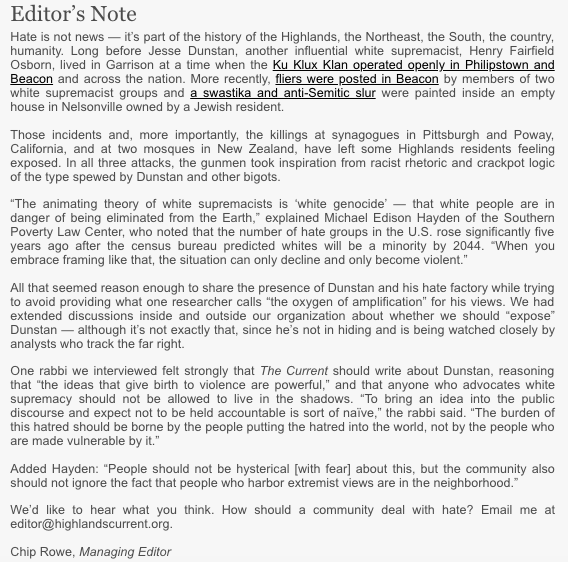
RELATED TRAINING: Covering hate and extremism
What did you learn?
There are many reporters who cover white supremacy as a beat, and their reporting was very helpful as I educated myself about this dark, strange world. The guy himself is a sidekick, not a serious subject of study by those who follow the far right, but for us, he was the local face of a disturbing story about a movement that has wind in its sails. It’s a tough topic because of the potential blowback from racists and also because by writing about it, you are almost certainly introducing the crackpot logic to people who might find it appealing as an easy explanation for their grievances.
I received good advice from various people about how to approach the story. A media ethicist suggested that the goal should be to cause the least harm possible to bystanders. We decided not to give details about his family members (who wouldn’t comment), although they are well enough known in the immediate community. My primary concern was fallout for his kids, so we did our best not to give specifics. I asked a rabbi if we should write about the guy, and the rabbi thought we should, arguing that while white supremacists have the right to say what they will, they also should have to take responsibility for what they say, including in the local community.
The continuing discussion we had was, once readers have this information, what should they do with it? In the end, we invited them to tell us what they thought could be done to combat hate locally. We also joined ProPublica’s Documenting Hate project so readers could report bias they had experienced.
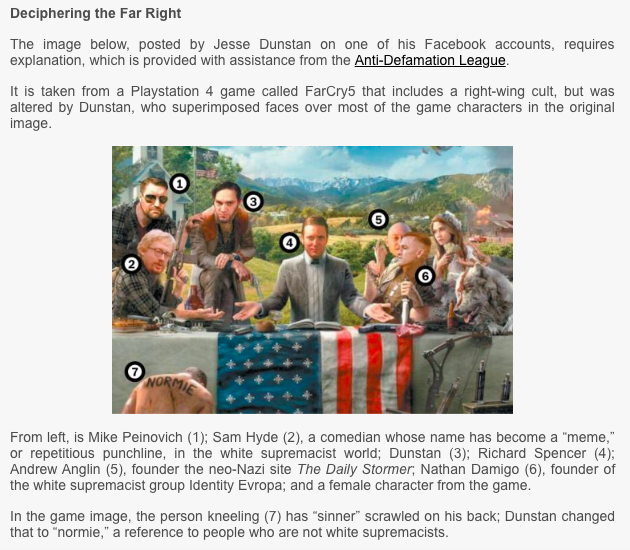
How can other local newsrooms do work like this?
We had an unusual situation because our homegrown hater lives openly, while most white supremacists operate in the shadows. But I’m sure every community has an element of extremism, and sometimes it comes out on social media. (The Center for Investigative Reporting showed that.) Yet you have to wonder if the bar is getting lower. We did another story where a “director of constituent services” for a county politician shared ugly messages about Muslims on his personal Facebook page, and we received exactly zero letters of concern from readers.






